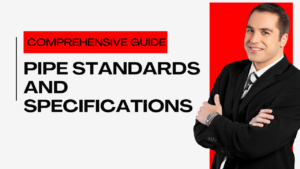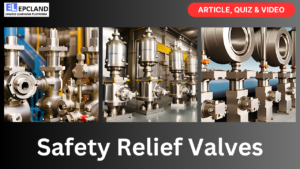Heating, Ventilation, and Air Conditioning :HVAC Systems play a pivotal role in creating comfortable indoor environments for various applications, from residential homes to commercial spaces. In this comprehensive guide, we’ll delve into the world of HVAC systems, exploring their types, objectives, and how they enhance indoor comfort.
Table of Contents
What is HVAC System?
HVAC stands for Heating, Ventilation, and Air Conditioning. It’s an integrated system designed to control the indoor climate by regulating temperature, humidity, and air quality. HVAC systems are used in homes, offices, factories, and various other settings to maintain a comfortable and healthy environment.
Objectives of HVAC Systems
HVAC systems serve several essential objectives:
- Temperature Control: The primary objective of HVAC systems is to regulate indoor temperature. Whether it’s heating during cold weather or cooling during hot months, HVAC systems ensure a consistent and comfortable temperature.
- Ventilation: Proper ventilation is crucial for maintaining indoor air quality. HVAC systems exchange indoor and outdoor air, removing pollutants and bringing in fresh air. This helps prevent the buildup of harmful gases and allergens.
- Humidity Regulation: HVAC systems help control indoor humidity levels. Excessive humidity can lead to mold growth and discomfort, while low humidity can cause dry skin and respiratory issues. HVAC systems maintain optimal humidity levels for comfort and health.
- Air Filtration: HVAC systems include air filters that capture dust, pollen, and other particles, improving indoor air quality. This is especially important for individuals with allergies or respiratory conditions.
Types of HVAC Systems
HVAC systems come in various types, each tailored to specific needs and settings. The three main categories are split HVAC systems, hybrid heat split HVAC systems, and packaged HVAC systems.
Split HVAC Systems
A split HVAC system consists of two main components: an indoor unit and an outdoor unit. The indoor unit contains the evaporator coil and the blower, while the outdoor unit houses the compressor and the condenser coil. These components work together to provide both heating and cooling.
How Split HVAC Systems Work
- Cooling: During hot weather, the indoor unit’s blower circulates warm indoor air over the cold evaporator coil, cooling the air. The cooled air is then distributed throughout the space.
- Heating: In cold weather, the system operates in reverse. The outdoor unit’s compressor circulates refrigerant that absorbs heat from the outdoor air. This heat is transferred indoors, where it’s released through the indoor unit’s evaporator coil, providing warmth.
Hybrid Heat Split HVAC Systems
Hybrid heat split HVAC systems combine the efficiency of an electric heat pump with the consistent warmth of a gas furnace. This system automatically switches between electric heating and gas heating based on outdoor temperatures.
Advantages of Hybrid Heat Systems
- Energy Efficiency: In moderate temperatures, the heat pump efficiently heats or cools your home using electricity, reducing gas consumption.
- Cold Weather Performance: When temperatures drop significantly, the system switches to gas heating, providing consistent warmth even in harsh weather.
Packaged HVAC Systems
Packaged HVAC systems contain all components—compressor, condenser, evaporator, and blower—in a single unit. These units are commonly used in smaller spaces or commercial buildings with limited installation space.
Installation Flexibility
Packaged HVAC systems offer installation flexibility as they can be placed on rooftops, in crawl spaces, or outside buildings. This is especially useful in situations where indoor space is at a premium.
FAQs
Q1: What is the purpose of HVAC systems? A1: HVAC systems regulate indoor temperature, humidity, ventilation, and air quality to provide comfort and maintain a healthy environment.
Q2: Can HVAC systems provide both heating and cooling? A2: Yes, HVAC systems can provide both heating and cooling using different components and processes.
Q3: What is a split HVAC system? A3: A split HVAC system consists of separate indoor and outdoor units that work together to provide heating and cooling for indoor spaces.
Q4: What are hybrid heat split HVAC systems? A4: Hybrid heat split systems combine the efficiency of an electric heat pump with the reliability of a gas furnace for versatile heating solutions.
Q5: Where are packaged HVAC systems commonly used? A5: Packaged HVAC systems are commonly used in smaller spaces, commercial buildings, and locations with limited installation options.
Conclusion
Understanding HVAC systems is essential for creating comfortable and healthy indoor environments. Whether you opt for a split system, a hybrid heat split system, or a packaged system, the objective remains the same: to regulate temperature, humidity, and air quality for optimal comfort and well-being. By choosing the right HVAC system for your needs, you can enjoy a cozy and inviting indoor space throughout the year.
Recommended courses (Published on EPCLand)
- Basics of Piping Engineering
- Piping Layout Engineering
- Piping Material Engineering
- Piping Stress Analysis
- Complete Course on Piping Engineering
- Material Requisitions
- Piping Material Specifications
- Valve Material Specifications
Don’t miss the published articles on following:
Related Video
Attempt Quiz
Question 1:
What does HVAC stand for?
Explanation: HVAC stands for Heating, Ventilation, and Air Conditioning. It refers to the technology and systems used to control indoor environmental conditions, including temperature, humidity, and air quality.
Question 2:
What is one of the objectives of HVAC systems?
Explanation: One of the main objectives of HVAC systems is to maintain indoor comfort conditions, including temperature, humidity, and air quality, to ensure the well-being and productivity of occupants.
Question 3:
Which of the following is NOT a type of HVAC system?
Explanation: “Solar Panel HVAC system” is not a recognized type of HVAC system. The other options refer to different approaches to designing and implementing HVAC systems.
Question 4:
Which type of HVAC system combines elements of both split and packaged systems?
Explanation: The “Hybrid Heat Split HVAC system” combines elements of both split HVAC systems and packaged HVAC systems, offering flexibility and efficiency in heating and cooling.
Question 5:
Which type of HVAC system includes all components within a single unit and is commonly used in smaller buildings?
Explanation: The “Packaged HVAC system” includes all heating, cooling, and air handling components within a single unit, making it suitable for smaller buildings with limited space.
Question 6:
Which of the following is NOT a component of HVAC systems?
Explanation: “Duct Tape” is not a component of HVAC systems. The other options are commonly used components in HVAC systems for heating, ventilation, and air conditioning.



